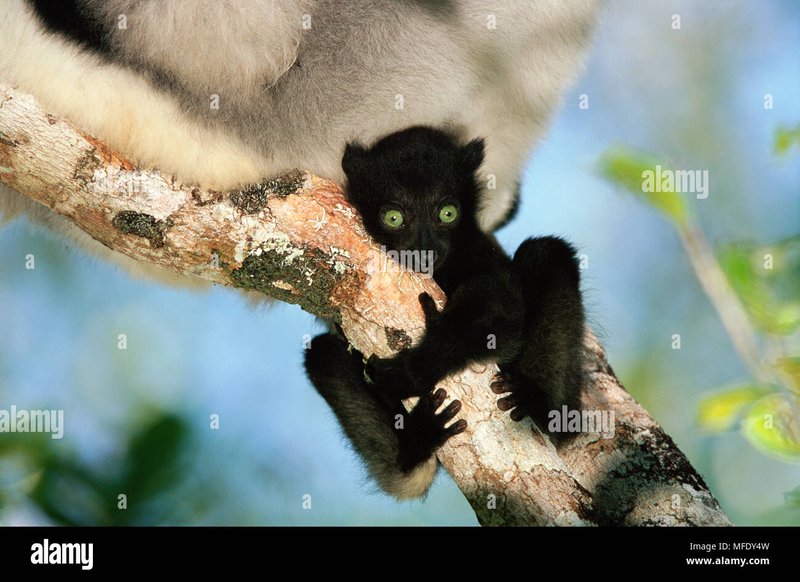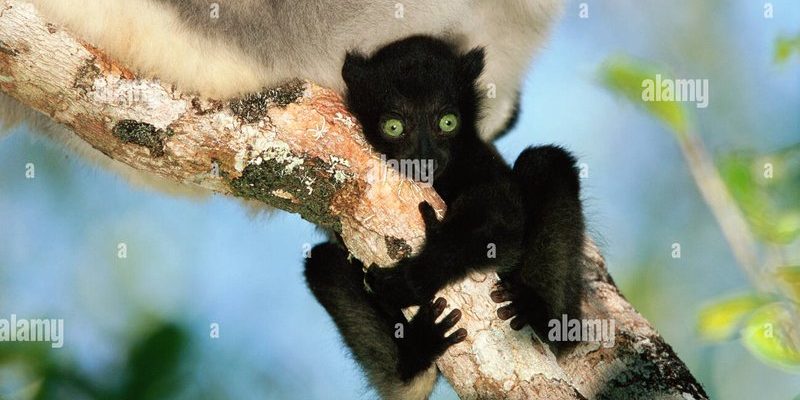
Imagine sipping your favorite coffee while contemplating how the indri hops through the treetops of Madagascar’s lush rainforests. These lively animals, which can jump up to ten feet in the air, are not just acrobats of the wild; they play a crucial role in their ecosystem. By dispersing seeds and helping to maintain their forest habitat, the indri contributes to the overall health of the environment. But with increasing habitat loss and hunting pressures, this species is teetering on the edge. Let’s unpack what’s going on.
Understanding the Indri: A Brief Overview
The indri (Indri indri) is a type of lemur found exclusively in Madagascar. It’s the largest living lemur and can weigh up to 20 pounds. Unlike its smaller relatives, the indri boasts a short tail and a distinctive vocalization that sounds a lot like a haunting song. These calls can travel several miles through the dense forest, helping them communicate with other indri families.
What sets the indri apart from many other lemurs is its unique social structure. Indri live in family groups, usually comprising a mating pair and their offspring. They are territorial and will fiercely protect their space from intruders. This social behavior not only provides bonding among family members but also ensures the survival of their lineage.
However, their specific needs mean that they are incredibly sensitive to changes in their environment. The indri primarily feeds on the leaves of specific trees, meaning that any changes to their habitat can severely affect their survival. So, what’s putting these delightful creatures at risk?
The Main Threats to Indri Populations
You might be wondering, “What’s causing the decline of indri populations?” Several factors come into play. The biggest threat is habitat destruction due to deforestation. Madagascar has one of the highest deforestation rates globally, primarily driven by logging, agriculture, and mining. As forests are cut down, the indri loses its home and food supply, pushing them closer to extinction.
Another significant threat is hunting. While it might not be as widespread as habitat loss, poaching has impacted local indri populations. Some communities hunt indri for food, believing them to be a delicacy. As their numbers dwindle, every lost individual counts.
Finally, there’s climate change, which exacerbates habitat degradation. Changes in rainfall patterns and temperatures can alter the delicate balance of the ecosystems where indri thrive, making it even harder for them to find food and shelter.
Current Conservation Status of the Indri
As of now, the International Union for Conservation of Nature (IUCN) lists the indri as Endangered on its Red List. This classification means that the species is facing a very high risk of extinction in the wild. The population is estimated to be fewer than 10,000 individuals, and it continues to decline.
Conservationists are sounding the alarm about the urgency of protecting this iconic species. Organizations are working tirelessly on the ground in Madagascar to address the challenges facing the indri. These efforts include protecting their habitats through the establishment of national parks and reserves, creating community awareness programs, and collaborating with locals to develop sustainable land-use practices.
Key Initiatives in Indri Conservation
Several initiatives aim to improve the survival odds for the indri and their habitats.
- Protected Areas: Establishing and maintaining protected areas is crucial. Madagascar has created national parks like Andasibe-Mantadia, which safeguard some of the last remaining habitats of the indri. In these reserves, the focus is on maintaining the forest ecosystem that supports the indri and many other endemic species.
- Community Involvement: Local communities play a vital role in conservation. Programs that involve local populations in wildlife protection, like ecotourism, build economic incentives for preserving the indri’s habitat rather than destroying it. Educating communities about the value of these animals helps cultivate a sense of pride and responsibility.
- Research and Monitoring: Continuous research initiatives help track the indri population and health. Monitoring their numbers and understanding their behavior allow conservationists to adapt their strategies to ensure better outcomes.
The Role of Eco-Tourism in Indri Conservation
Eco-tourism is another powerful tool in the fight to save the indri. By promoting responsible tourism, local economies can thrive while also contributing to conservation efforts. Visitors flock to Madagascar with hopes of glimpsing these remarkable creatures in the wild. This influx of tourists can provide necessary funding for conservation programs and create job opportunities for local residents.
Here’s how eco-tourism works hand-in-hand with conservation:
* Funding: The revenue generated from tourism can directly support conservation projects, helping to fund habitat restoration and anti-poaching efforts.
* Awareness: Tourists often leave with a better understanding of the challenges facing the indri, spreading awareness back home and inspiring further action.
* Community Empowerment: Involving local residents in the tourism industry fosters a sense of ownership over the wildlife and their habitats.
However, it’s crucial that eco-tourism is done responsibly. Visitors need to be educated about how to interact with wildlife without disturbing their natural behaviors.
How You Can Help the Indri
Feeling inspired to make a difference for the indri? There are several ways you can contribute to their conservation from anywhere in the world.
* Support Conservation Organizations: Research and donate to reputable organizations that focus on Madagascar’s wildlife conservation efforts. Your contributions go directly toward protecting habitats and supporting local communities.
* Be an Advocate: Spread the word about the plight of the indri and other endangered species. Whether it’s through social media or conversations with friends, raising awareness can spark interest and action.
* Choose Eco-Friendly Products: Opt for products that support sustainable practices. By making conscientious choices, you can help reduce the demand that leads to habitat destruction and environmental harm.
The Future of the Indri: Hope Amidst Challenges
While the situation for the indri is serious, there’s still hope. Conservation efforts show promise, and with the right support, we can work toward a future where the indri thrives once again. It will require a collective effort—from governments to local communities and global citizens—to protect this extraordinary species.
In conclusion, the indri’s fate is intertwined with the health of Madagascar’s forests and the commitment of people dedicated to preserving them. For now, we can only hope that awareness leads to action and that future generations will marvel at these incredible creatures hopping joyfully through the treetops. If we act collectively, there’s still a chance we can secure a brighter future for the indri and the beautiful ecosystems they inhabit.

